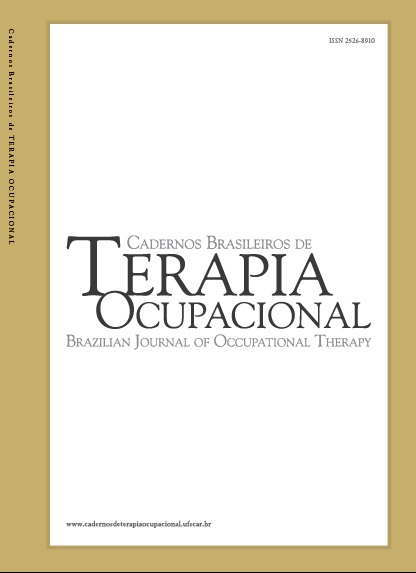Employability of occupational therapists in the Central-West region of Brazil
DOI:
https://doi.org/10.1590/2526-8910.ctoAO396938531Keywords:
Occupational Therapy, Work, Employment, Professional Practice LocationAbstract
Introduction: Studies on the mapping of Brazilian occupational therapists address aspects of the employability of these professionals, considering local realities, but little is known about those working in the Central-west region. Objective: To characterize occupational therapists in the Central-west region in terms of their sociodemographic profile, employability, and professional practice. Method: A descriptive, exploratory quantitative research in which 187 occupational therapists registered with the Regional Councils of Physiotherapy and Occupational Therapy in the Central-west completed an online form. Results: 90% (n=167) were women, and 73% (n=129) had completed a lato sensu specialization. It was found that 55% (n=103) work in the private sector, and 79% (n=147) serve children aged 0 to 11 years old. Half (50%; n=75) of the professionals work at more than one location, 65% (n=124) work more than 31 hours a week, and the types of employment identified were: CLT (28%; n=53), PJ (17%; n=32), and self-employed (17%; n=34). In addition, 46% (n=87) of the participants earn between 4 and 10 minimum wages. The study discusses the absorption of occupational therapists into the private sector, the demand for the opening of public positions in regional services, the lack of a compatible minimum salary for the profession, and the accumulation of work that supplements income, but may also generate overload, including due to the different types of contracts identified in this study. Conclusion: The study presented a profile of occupational therapists in the Central-west region and contributes to the understanding of regional demands and to new reflections on professional training and career opportunities.
Downloads
Published
How to Cite
Issue
Section
License
Copyright (c) 2025 The Authors

This work is licensed under a Creative Commons Attribution 4.0 International License.


